It was the new growth and development that brought Juan Escorcia back to Chula Vista. But sometimes, it’s also the growth that worries him.
Escorcia is from Tijuana and the South Bay. As he began thinking about getting married and raising kids, Chula Vista — with its booming neighborhoods, newer parks and schools — started making more and more sense.
“It's a wonderful location for people that want to just grow a family,” he said. “You have everything that you could ask for.”
In August 2016, Escorcia and his wife got married. That same month, they moved into their first home in the Eastlake Greens neighborhood of the city.
Around the same time, with the growing risk of wildfires in California, Escorcia began wondering whether that growth he was excited by was also a gamble. Escorcia is now a real estate agent and works directly with people interested in buying homes. During those conversations, he said the question of wildfire safety in Chula Vista often comes up.
“It’s definitely a thing that’s always in the back of your head,” he said. “There's a lot of valleys, there's a lot of open space as well. If not controlled, then it could be a disaster.”
Chula Vista has transformed over the last decade, spreading to the east. Thousands of people have moved into the city, making it one of the fastest-growing communities in California.
However, as it continues to grow, the threat of a major wildfire in Chula Vista is also growing. The eastern half of the city may face some of the most urgent wildfire risks in the county, according to its multi-jurisdictional hazard plan, an emergency document that all cities were required to update last year.
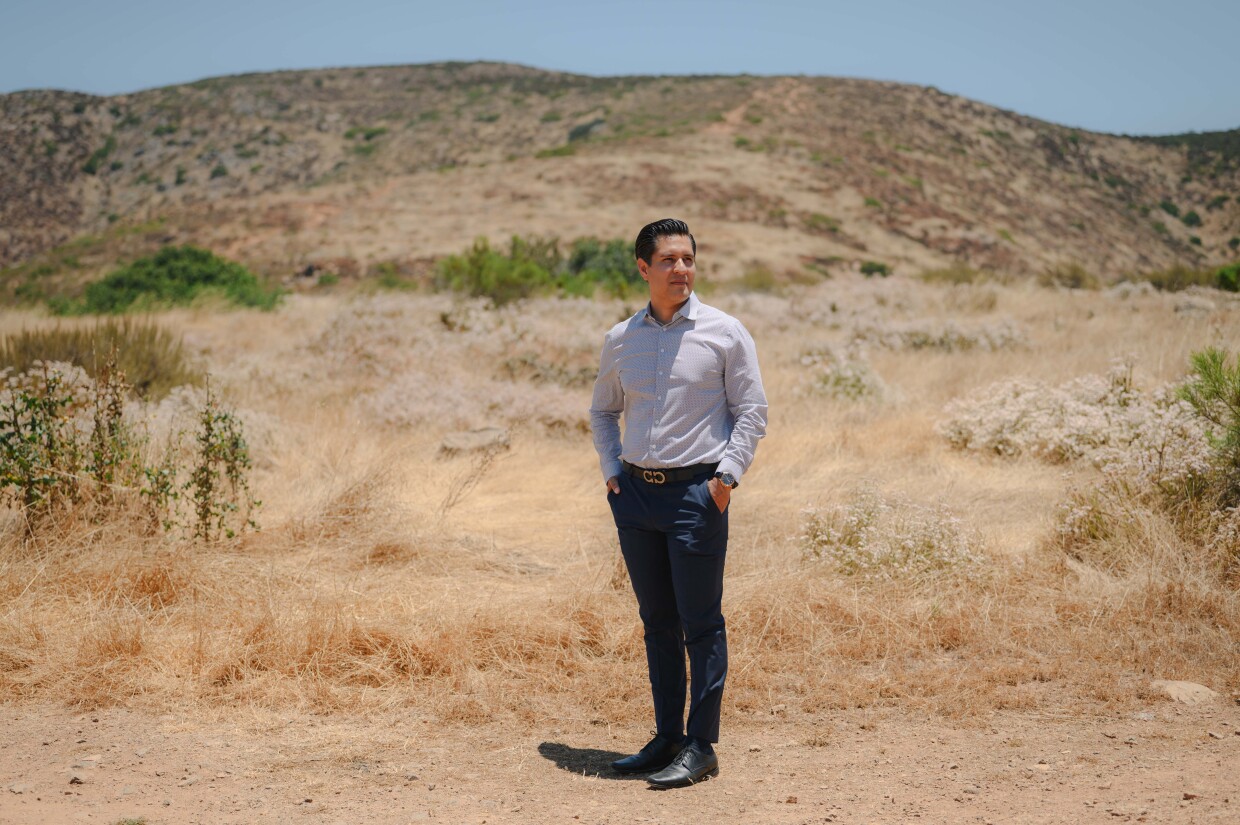
Much of the danger comes from the dozens of canyons that carve through the eastern half of the city. If a wildfire sparked to life in one of those ravines, thousands of homes could ignite.
“As it stands, the city's wildland urban interface protection is inadequate and does not provide a defensible space for the Fire Department to defend these homes,” the plan warns. “With limited funds to establish a vegetation management program, homes within the ember zone will continue to remain at high risk.”
Chula Vista was the largest city in the county to rate its exposure to wildfire risk as “extreme,” meaning that a major fire could affect more than three-quarters of the city. Four other cities also reported extreme risks from wildfires: Escondido, Poway, San Marcos and Vista. The city of San Diego said its exposure was “moderate.”
Those risks are likely to keep growing as climate change brings longer droughts and drier autumns to the San Diego region, according to the state climate assessment.
City leaders have taken action to try and get ahead of a major wildfire, including a three-year initiative to clear out the canyons that pose the greatest dangers. But whether those efforts will be enough remains an open question.
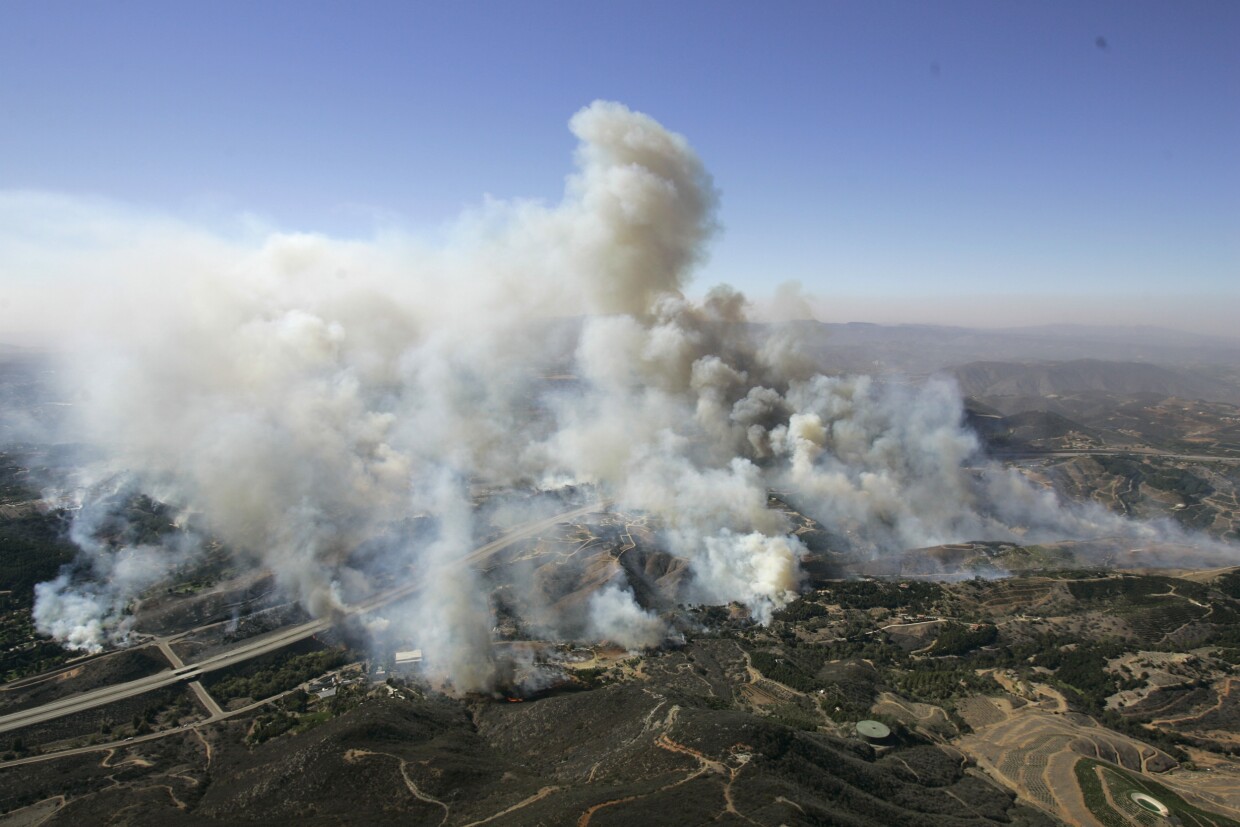
‘It’s burned before’
Wildfires have always been a natural part of the San Diego landscape.
For millennia, fires would burn through the chaparral ecosystem, thinning out shrubs and helping some seeds begin to grow. Fires burned in San Diego less frequently than in other parts of the state, sparking just a handful of times every century, and would burn fiercely when they did.
But that’s changed as homes and cities have sprung up. Regional authorities have spent the last 100 years suppressing the natural burning of these ecosystems. Those actions protected California’s growing communities but allowed forests, grasslands and shrublands to grow wild, creating the tinderboxes of plant life that have fueled devastating fire events such as the 2017 Tubbs Fire in Sonoma County.
In Chula Vista, it’s been more than a decade since a major wildfire burned near the city. The Harris Fire in 2007 burned right up to homes on the eastern side.
Today, the fire danger comes from the dozens of canyons on the eastern side of the city, according to the city's hazard plan.
Inside those ravines, lemonade sumac and other shrubs have been allowed to bloom out of control, building up layers of dry vegetation. Some of those canyons are also lined by thousands of older homes built before newer fire safety codes. That means when shrubs creep closer to the buildings, the structures themselves are less “hardened” against embers and heat.
Some of the highest-risk neighborhoods included the homes around Rice Canyon, Rancho Del Rey Canyon and Bonita Long Canyon, according to the hazard plan.
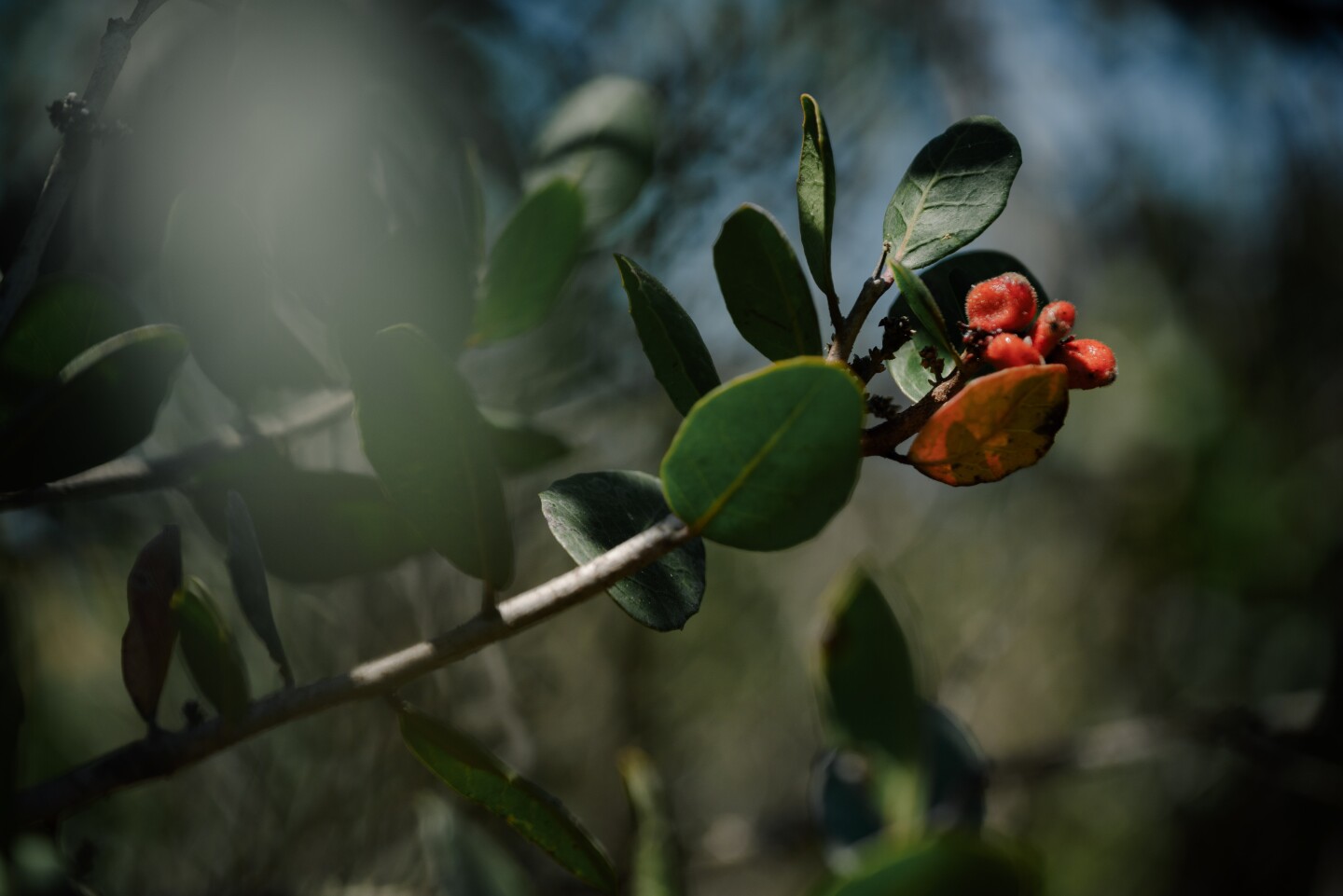
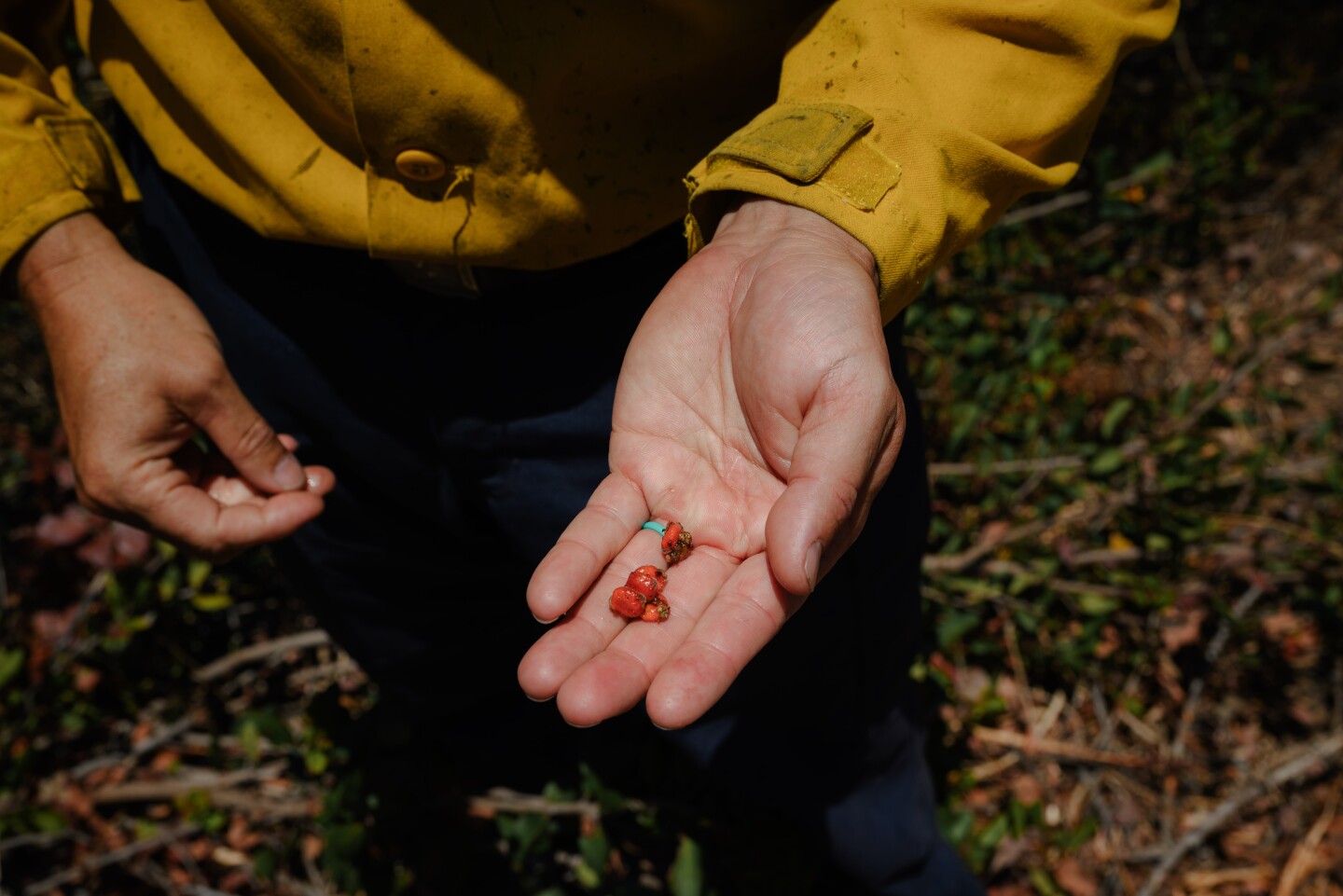
“We have several areas of the city that we're not able to reach annually,” said Chula Vista Emergency Services Manager Marlon King, who authored the wildfire sections of the city’s hazard plan. “With over 30 open space areas and a limited budget and a limited amount of staff within our divisions, you can't get to all of these areas.”
Many newer homes further east are also located in areas the state considers high-risk. However, most of those buildings are built to tighter safety standards, with a planned 100-foot buffer and fire stations nearby.
These issues of built-up vegetation and generational differences in homes aren’t unusual, said to Luca Carmignani, a fire advisor for Southern California at the University of California, Agriculture and Natural Resources. He thinks it’s important for residents to know that many communities and local governments across California face these same types of risks.
“You need a lot of capacity to not only prepare these areas with vegetation, but also maintain them,” Carmignani said. “It's pretty realistic, in my opinion, that they don't really have the resources to do that by themselves.”
Still, city fire officials said the growth of shrubs in the valleys is happening because the city hasn’t set aside enough money to manage the growth of vegetation and the creation of defensible space.
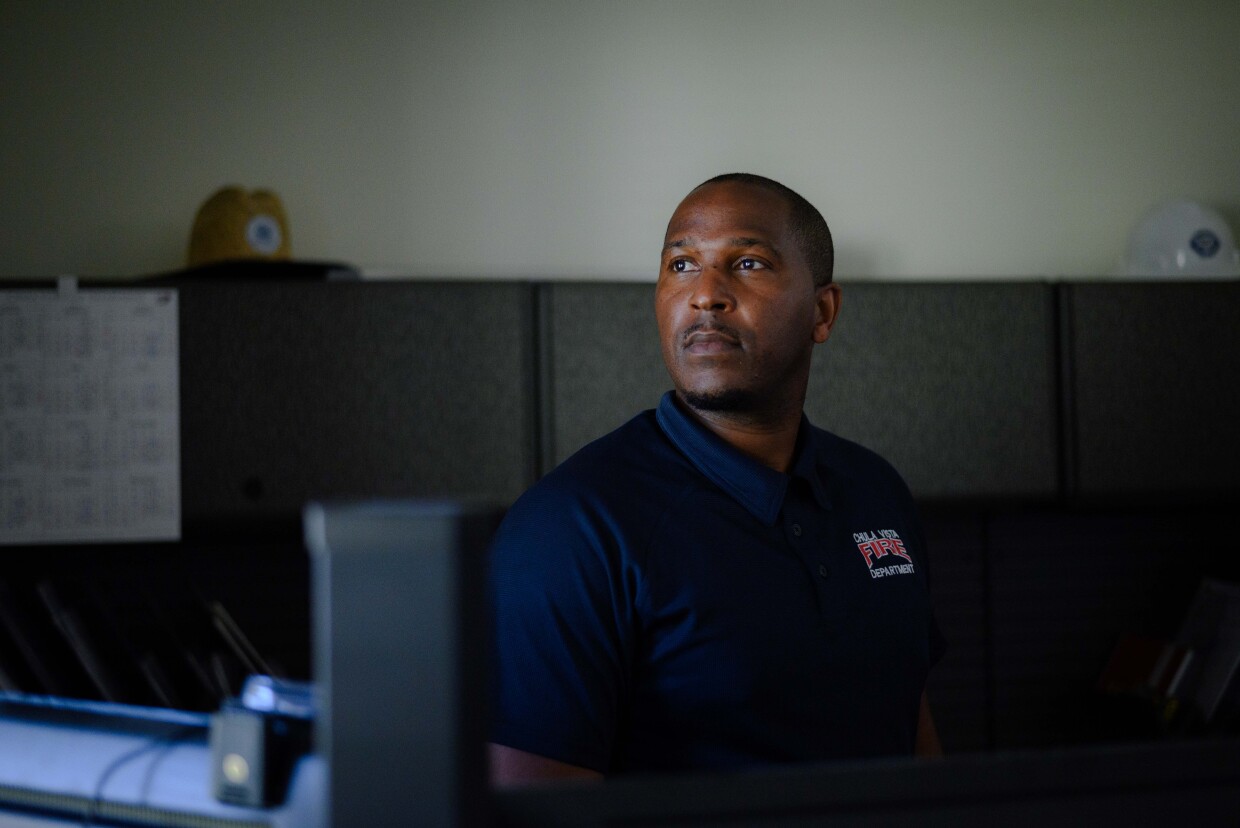
“As much as wildfire is a distinct risk to the community, there are other things that become more of a priority,” Fire Chief Harry Muns said. “And so those type of things do get their tax dollars pushed in that direction for those services.”
That means the city remains vulnerable despite adopting new safety standards and tightening its building codes, fire officials said. Chula Vista has a higher wildfire risk than 93% of all communities in the country, according to the U.S. Department of Agriculture.
Since 2005, Chula Vista has seen around 38 smaller brush fires every year, city officials said.
“I do believe that this area will burn again,” said Cal Fire Chief Tony Mecham, who oversaw part of the state’s response to the Harris Fire, at a county meeting in 2019. “It’s burned before.”
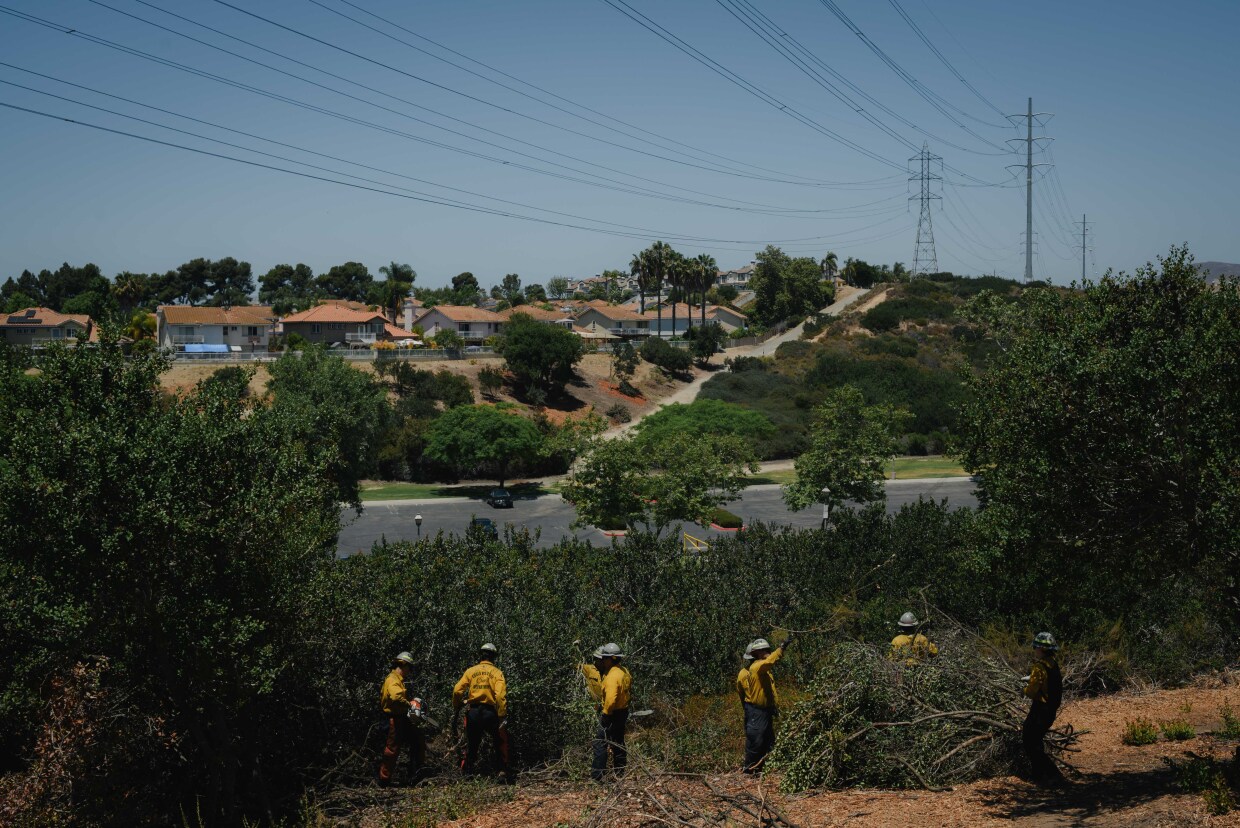
'This is long overdue'
On a hot June morning earlier this week, the roar of chainsaws echoed through the canyon next to Kumeyaay Park, near Southwestern College. A group of yellow-jacketed firefighters cleared a patch of overgrown lemonade sumac, carving out a 100-foot gap between the ravine and the apartment buildings above.
The group was part of the Chula Vista Fire Department’s new fuels crew, a team of firefighters tasked specifically with clearing out some of the most overgrown canyons. The team’s leader, Capt. Andy Wilson said it felt like one of the most meaningful projects he’d worked on in his career.
“I’m passionate about it because it’s preventative,” he said. “This is long overdue.”
City leaders in Chula Vista have taken some decisive steps in recent years to prepare for the damage that a major wildfire could cause.
One of those measures is the fuels crew: a special team of wildland-trained firefighters armed to the teeth with chainsaws, weed whackers and other heavy-duty tools. The Fire Department launched the team as a pilot program in 2023 with funding from the city’s public safety tax and plans to keep it running for at least two more years.
Carmignani, the UC fire advisor, agreed the fuels crew was a step in the right direction. He said the city could also use that program as an opportunity to speak with residents about wildfire risk and safety.
“If you use those opportunities to maybe have outreach or explain why something is done in a certain way, that would definitely make people feel safer,” he said.
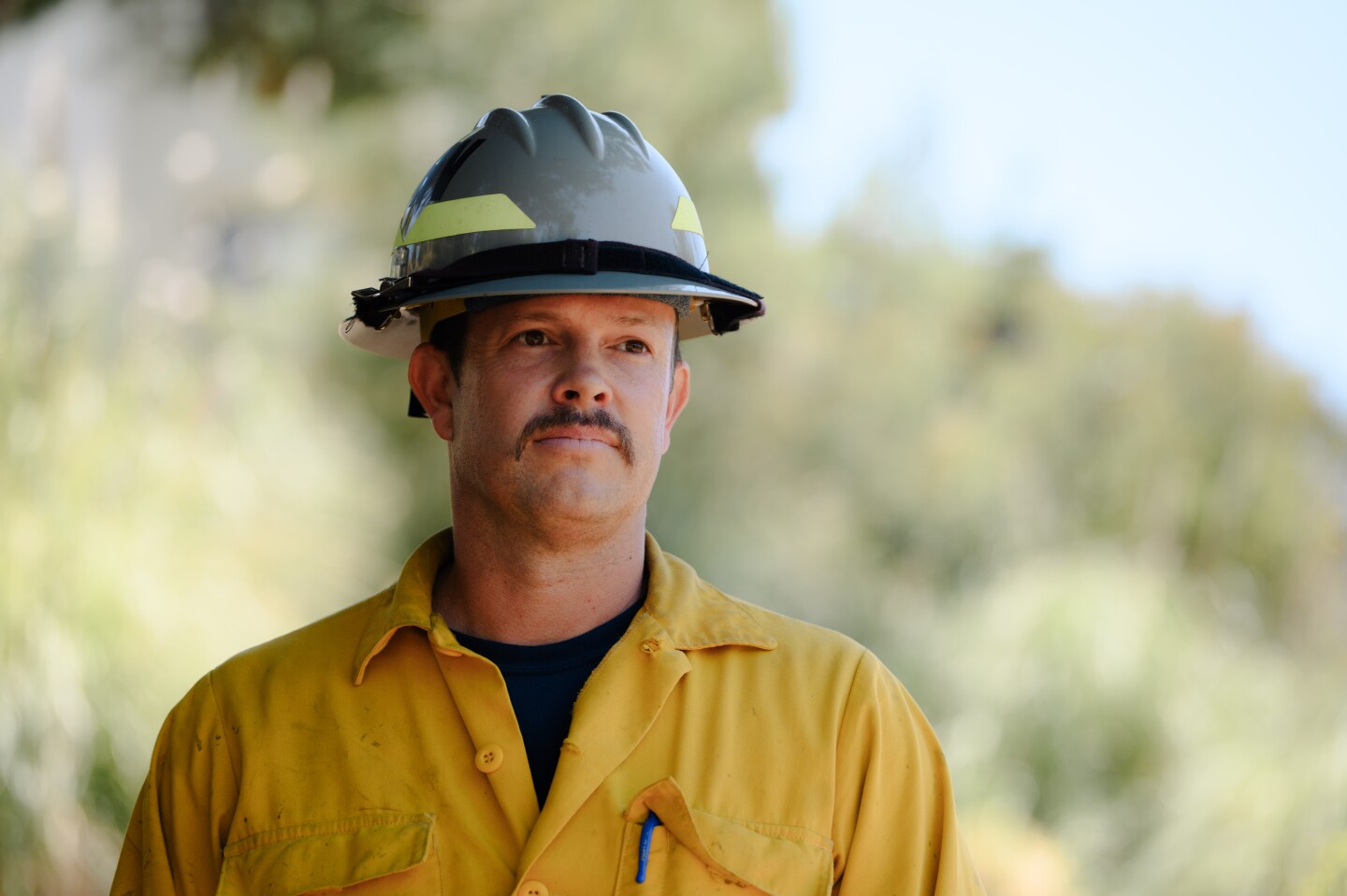
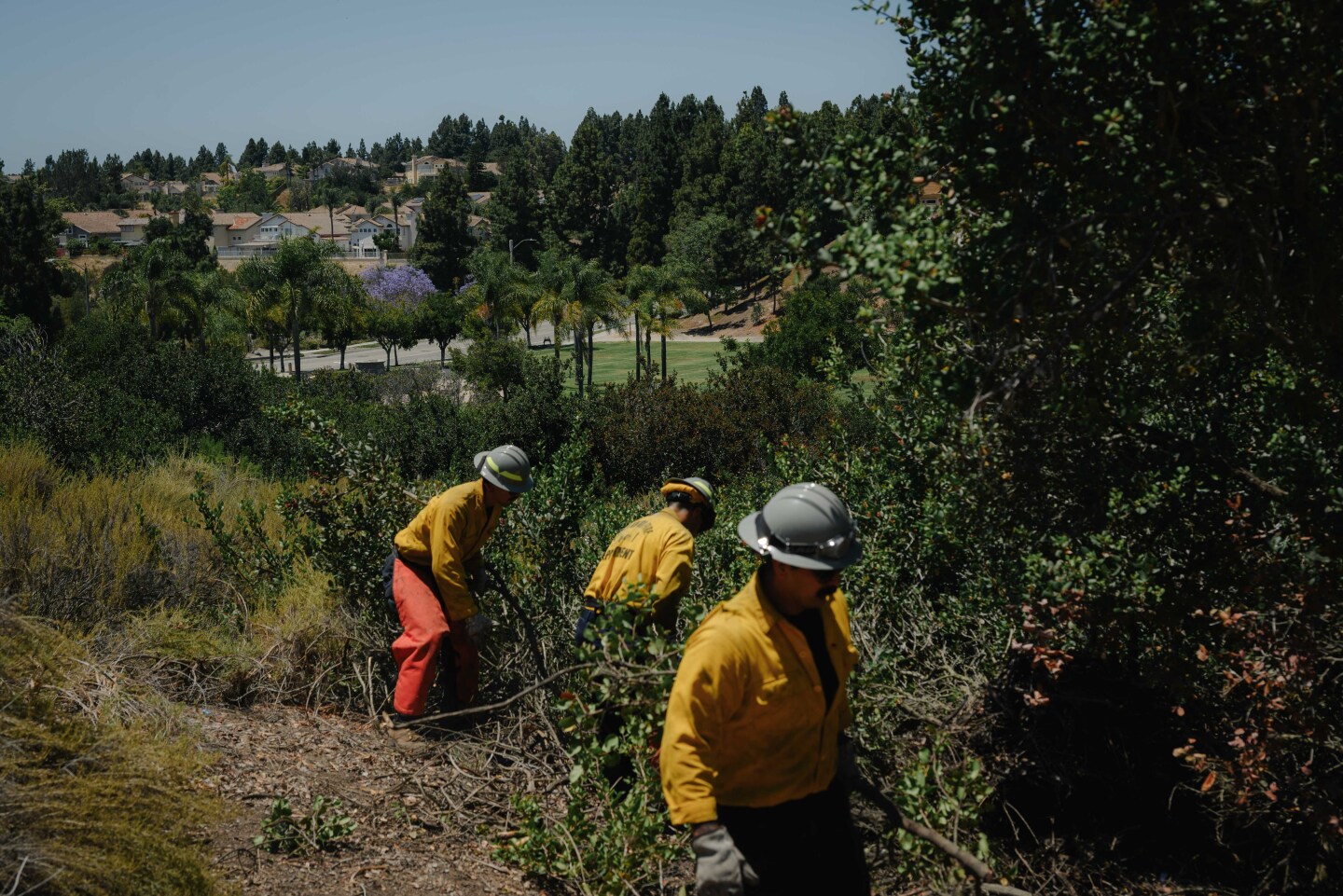
Wilson said the crew is prioritizing the most dangerous canyons and has managed to significantly clear out three of them so far.
Another measure the city’s fire department is taking is trying to revive the dormant fire safe council, which disbanded during the COVID-19 pandemic. Chula Vista Emergency Services Manager King is working on recruiting residents for the council, which is part of a network of volunteer groups that try to spread information about local fire risk and safety across the county.
Earlier this year, the state Board of Forestry and Fire Protection recognized Chula Vista for its preventative work. The city and its fire department were named to the Fire Risk Reduction Community List.
“What that means is the city is demonstrating best practices in fire management and fire planning,” King said.
He said that designation also means residents will be able to apply for reduced home insurance premiums and the fire department may have an easier time applying for new grants.
Still, fire officials admit that most of the risks outlined in the hazard plan have remained largely the same since it was updated last October.
Earlier this year, the Chula Vista City Council also froze hiring another fire prevention specialist during budget talks. Instead, city leaders voted to hire nine firefighters to serve at the new Bayfront fire station.
City Councilmembers Carolina Chavez and Alonso Gonzalez, who represent the city's eastern side, did not respond to multiple requests for comment.
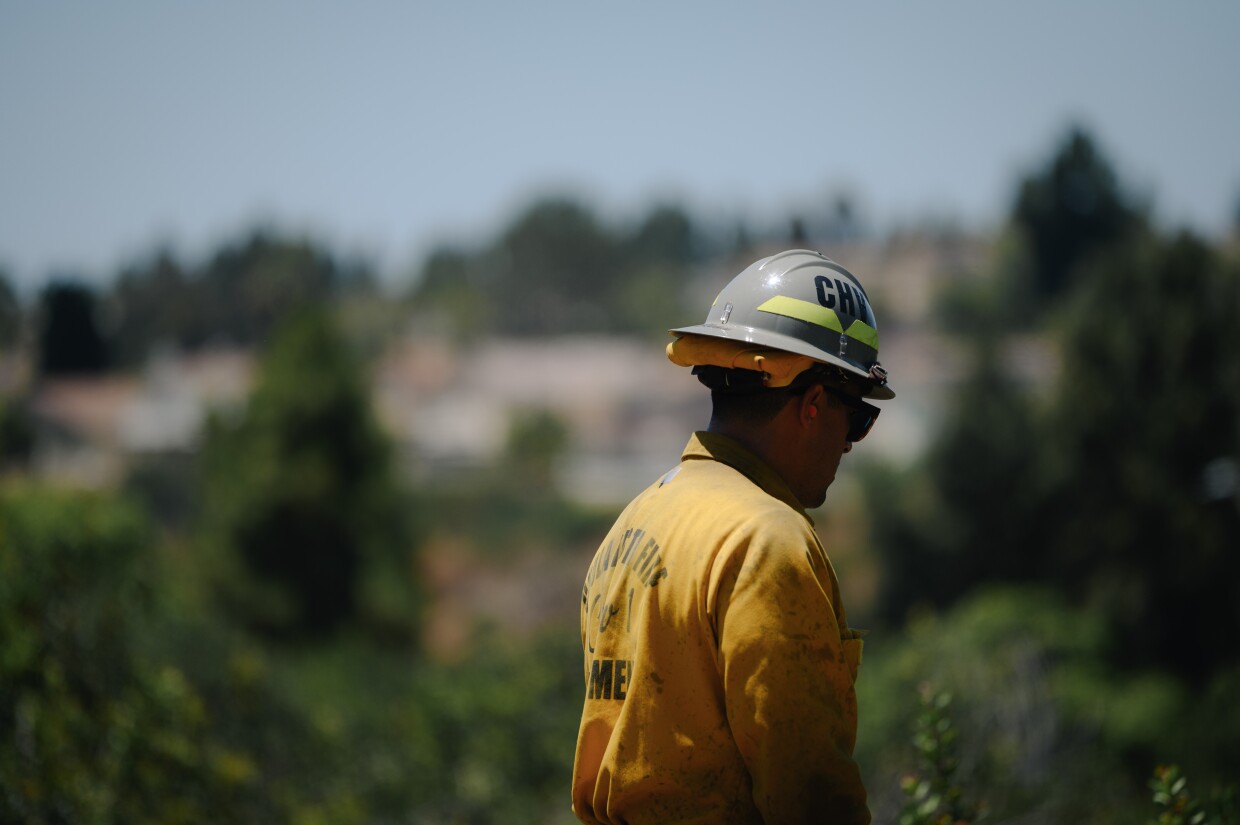
‘We are the ones living here’
Local fire officials and researchers said residents also have a critical role to play in reducing the threat of a major wildfire.
Fire advisor Carmignani said the possibility of wildfires is now a reality of life on the West Coast. He argues that Californians may need to start thinking about wildfires more like other natural disasters like hurricanes.
“You don't expect emergency personnel to come and protect your house from a hurricane,” he said. “I'm not saying that has to be the same for fires, but at the same time, there has to be more preparation for residents or communities.”
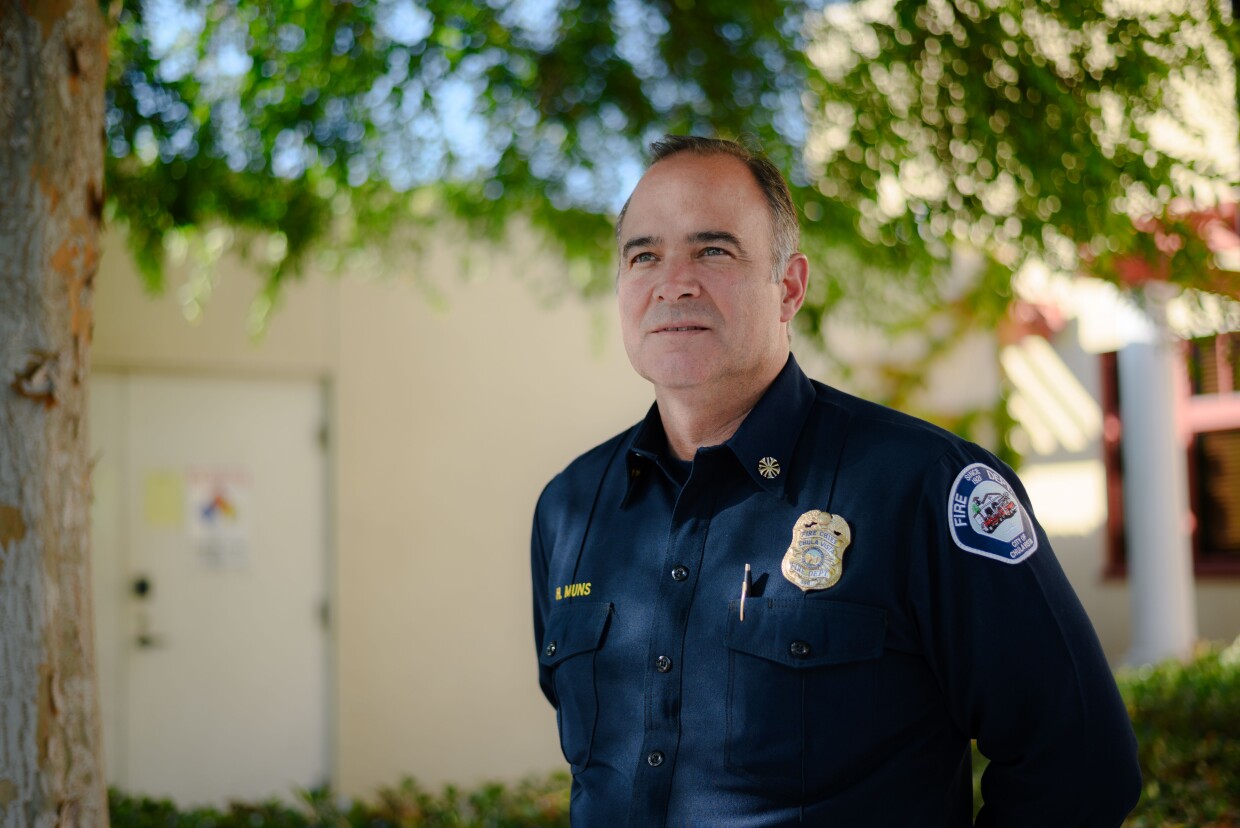
Carmignani and other experts said there are a number of steps that homeowners and renters can take to prepare for the next fire, including free or relatively inexpensive measures.
One possible first step is applying for a free home assessment from the regional San Diego Fire Safe Council, a fire safety and awareness-focused nonprofit organization.
An assessment team walks around the building with the resident, flags potential fire hazards, and then writes up a personalized report of recommendations and resources. The reports are confidential, and renters and homeowners anywhere in the county can apply.
“It's different than a fire inspector coming up to your property because, if you decide not to do it, that's your choice,” said Morgan Dioli, a program manager with the Council. “(It’s) just an educational, friendly, neighbor-helping-neighbor approach based on fire agency ordinances.”
Dioli said their assessment team rotates through each part of the county twice per year and should be in Chula Vista in mid-August.
For residents who apply for and complete an assessment, the Council also offers additional low-cost programs, like help clearing out vegetation and other hazards around lower-income residents’ homes.
Other organizations, such as Cal Fire, also have recommendations for low-cost ways to harden your home, including covering vents and chimneys with screens that will block embers from getting inside — one of the main ways that a home can catch fire.
For Escorcia, the resident and real estate agent, it’s also been important to get to know his neighbors and have more open conversations about these risks.
“We have an opportunity and also responsibility to get a lot more involved in the community,” he said,
Despite the questions about wildfire risk and preparedness, Escorcia said he’s proud to live in Chula Vista and said the fire department’s consistent presence nearby makes him feel safe.
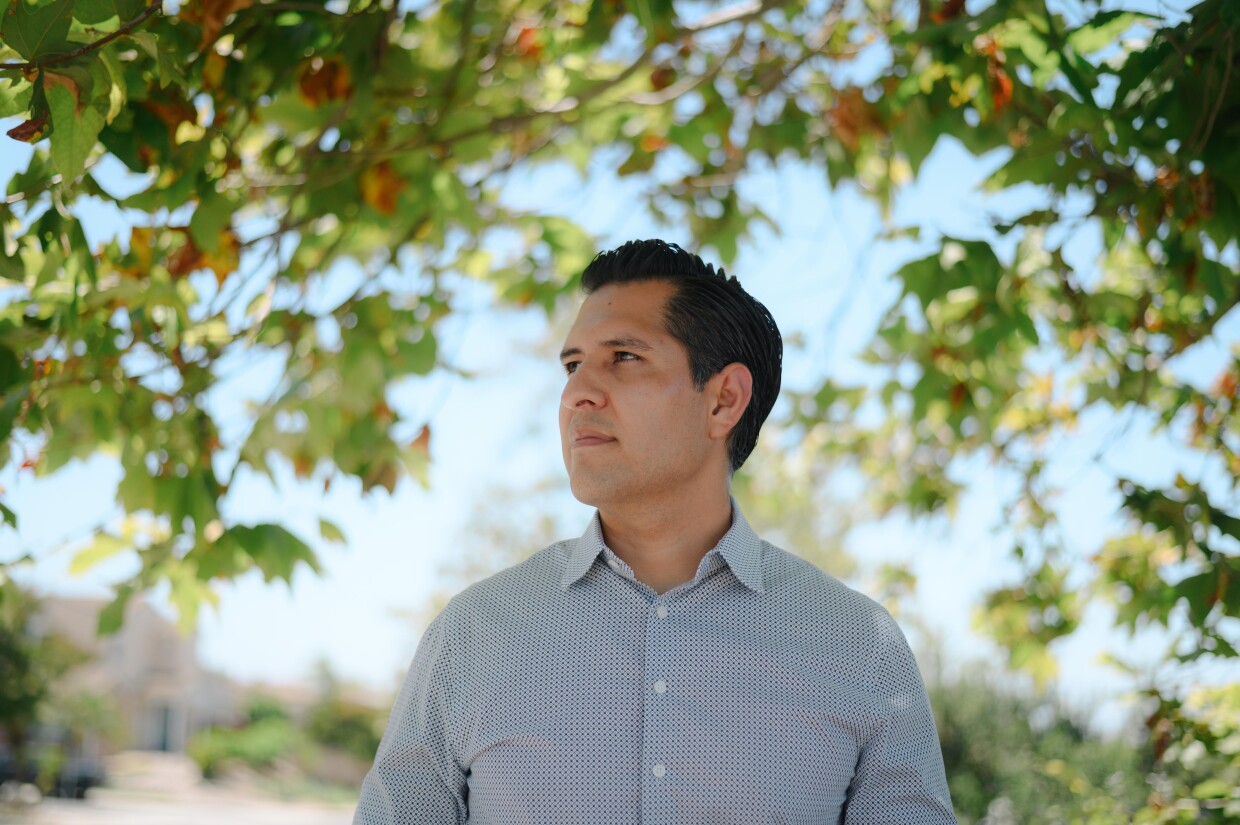
Still, Escorcia also said he isn’t sure what the future holds.
“We love Chula Vista, we’ve seen our family grow here,” he said. “But we don't know. We don't know where that will take us.”
To learn more about your local fire safety resources, call the Fire Safe Council of San Diego County’s bilingual hotline at (619) 562-0096 or visit its website.






